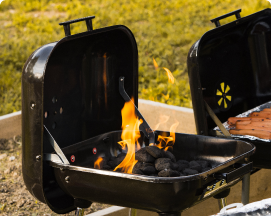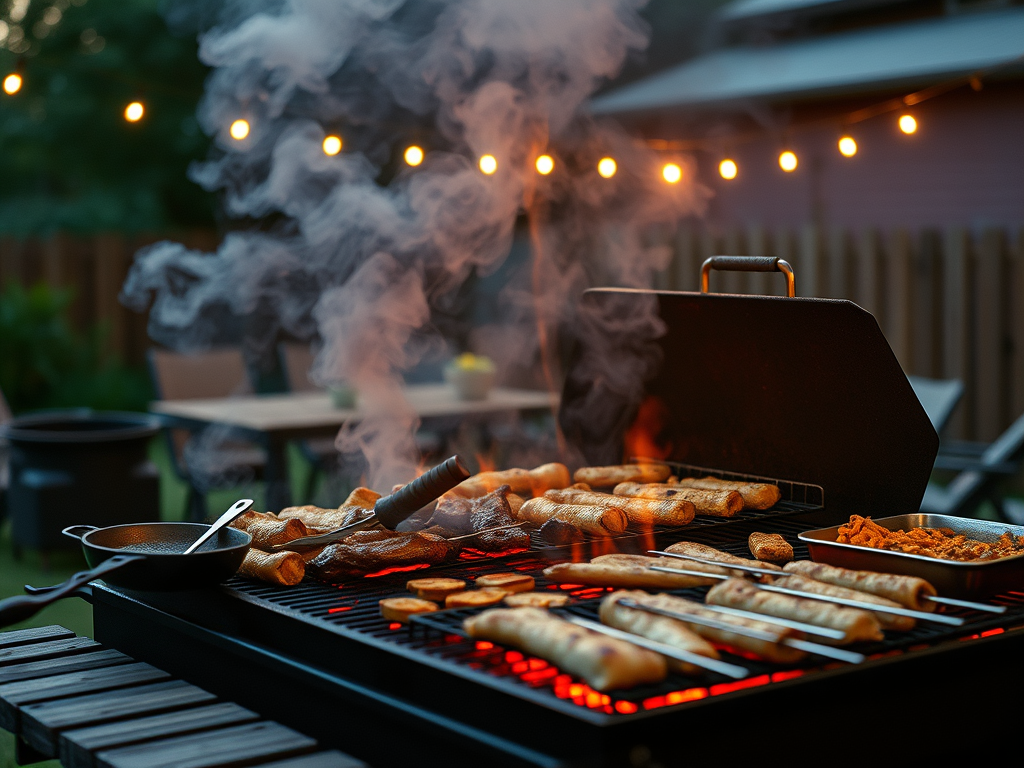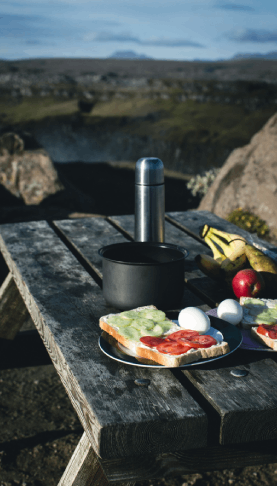White quebracho (Aspidosperma quebracho-blanco), often called “axe-breaker” wood due to its extreme density, is a South American hardwood native to the Gran Chaco region of Argentina and Paraguay. It’s prized in grilling—especially for Argentine-style asados (barbecues)—because it burns exceptionally clean and hot, making it ideal for charcoal production or direct use as firewood. Whether you’re using it as lump charcoal or split logs, it delivers consistent results with minimal hassle. Below, I’ll break down how to use it effectively, tying into techniques for that elusive “thin blue smoke” from our earlier chat.
Why White Quebracho Excels for Grilling
This wood’s ultra-low moisture content (typically 0-5%, far below the 8-12% ideal for other hardwoods) means it ignites quickly, produces almost no white smoke, and sustains a steady, high-heat burn without flavor-killing creosote. It imparts a mild, neutral smoky aroma that enhances meats without overpowering them—think subtle depth for steaks, ribs, or veggies. Key burning properties:
- Heat Output: 6,400+ kcal/kg—reaches 700-900°F easily for searing.
- Burn Time: 4-5+ hours per load, double that of oak or mesquite.
- Ash Production: Very low (under 6%), keeping your grill clean.
- Smoke Profile: Starts with a brief clean ignition, then shifts to thin blue smoke at 650°F+ for pure, repeatable flavor.
Compared to softer woods like pine (which spits resin and smoke), white quebracho is a game-changer for low-maintenance cooks.
Pros and Cons
| Aspect | Pros | Cons |
|---|---|---|
| Burn Quality | Long, even burn with minimal smoke/ash; perfect for indirect smoking or direct grilling. | Can spark slightly if not fully seasoned (rare with its natural dryness). |
| Ease of Use | Lights fast (thanks to low moisture); great for beginners or pros. | Denser than most woods, so it may take longer to fully ember (but worth it for stability). |
| Flavor & Efficiency | Neutral smoke enhances food subtly; high yield (1.5 kg wood ≈ 1 kg meat). | Mild flavor might need pairing with aromatic woods (e.g., add cherry chunks) for bolder smoke. |
| Sustainability | Often from managed forests (look for PEFC-certified); eco-friendly with low waste. | Availability can be spotty outside South America; pricier than basic charcoal. |
Overall, the pros dominate for serious grillers—it’s cleaner and longer-burning than red quebracho (quebracho colorado), which is denser but slower to light.
How to Use White Quebracho in Your Grill
Aim for that “thin blue smoke” sweet spot: bone-dry wood + controlled airflow. Here’s a step-by-step for charcoal or logs.
- Prep the Fuel
- Charcoal: Use XL lump (40-150mm pieces) for even heat—no additives needed. Fill your chimney starter halfway; light with a torch or newspaper (10-15 min to glow).
- Firewood: Source split logs (3-6″ diameter, <5% moisture—test with a meter). Stack in a top-down pile: large base logs, kindling on top.
- Build the Fire
- In a kettle, kamado, or offset grill: Start with 4-6 lbs of charcoal/logs in a snake method for indirect heat.
- For direct grilling (asado-style): Pile centrally; let it form a coal bed in 15-20 min. White quebracho’s density means no rushing—patience yields stable embers.
- Achieve Thin Blue Smoke
- Once at 600°F (dome temp via infrared thermometer), open vents 1/3 each. Add fist-sized pieces every 15-20 min only when coals glow red.
- “Smoke Anchor”: Place one off-center log/charcoal chunk—it’ll smolder slowly for 60+ min of clean blue smoke without billowing white.
- Pro Tip: Pair with a wireless probe set to alert at 625°F (add fuel) and 775°F (vent down).
- Cooking Tips
- High-Heat Searing: Ideal for steaks (bife de chorizo) at 700°F+; flip once for crust.
- Low-and-Slow Smoking: Sustains 225-275°F for brisket or ribs (20+ hours possible).
- Usage Ratio: 1-2 kg per kg of meat for efficiency. Clean up: Minimal ash means quick post-grill maintenance.
Where to Get It & Final Thoughts
Look for bbqdaddycharcoal.com 100% white Quebracho!
White quebracho turns frustrating temp swings into pro-level consistency—same oven, same wood, one technique. Fire it up for your next cook, and you’ll wonder why you didn’t switch sooner.






